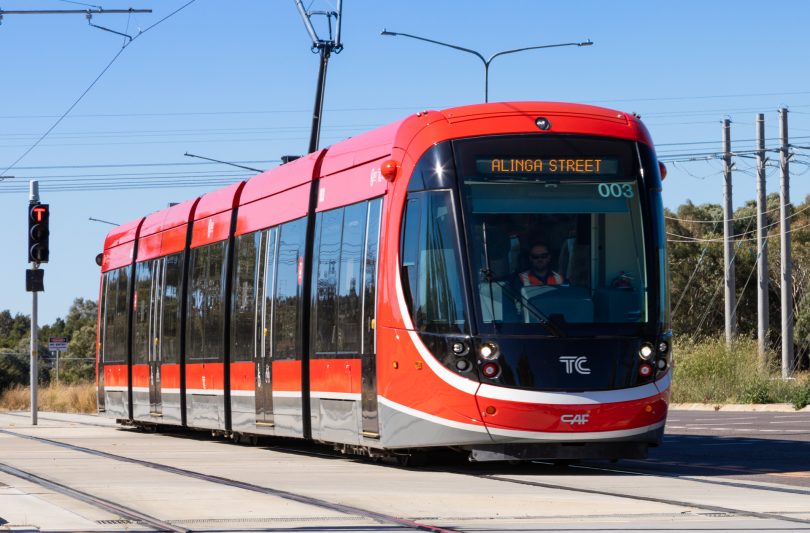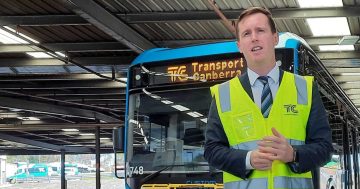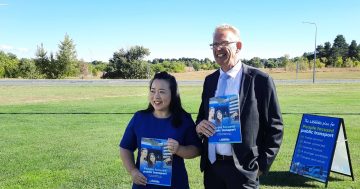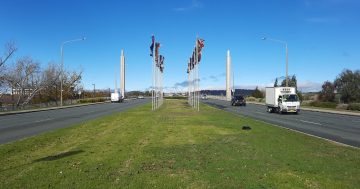
The light rail stop at EPIC. The Spilt Milk crowds overwhelmed the service. Photo: Michelle Kroll.
Whatever happened last weekend after the Spilt Milk music festival ended, it wasn’t a good advertisement for Canberra’s public transport system and the vaunted people-moving capabilities of light rail.
Transport Minister Chris Steel, under attack in the Legislative Assembly from Liberal counterpart Mark Parton, may publicly play down the scenes of festival-goers spilling onto the tracks causing services to be suspended and resulting in people already on board being kicked off to walk into the city or home.
But privately he should be asking some serious questions of Transport Canberra and how it managed to underestimate the resources needed to marshal the crowd and get them away from EPIC in as orderly a fashion as possible.
As Mr Steel said, the festival was a success with 45,000 young people packing into EPIC for the Saturday event.
They were still around the next day in the city, filling the Canberra Centre and descending on cafes like locusts to eat some of them out of the stores by lunchtime.
Whatever your music tastes, Split Milk is a big event that brings big dollars to town, and like any other event involving thousands of people, deserves to be managed properly to ensure the health and safety of everyone.
Mr Steel called it a learning experience but the ACT Government has been managing big events for years, most notably the buses laid on for Brumbies and Raiders games at Canberra Stadium, where marshals keep a firm grip on waiting lines.
Sure, these crowds may be well drilled and better behaved than the mob at EPIC but that should be anticipated and planned for with enough staff to herd them and enough buses and light rail vehicles to move them.
The festival would have had a transport plan, and organisers and Transport Canberra would have worked on it together.
Did they not expect that many people, or just believe the resources allocated would do the job? Did officials and drivers panic on the night? Was the frequency of services insufficient?
As it is, the fiasco gave Mr Parton the opportunity to call into question the capability of light rail. After all, one of the justifications for light rail is its ability to move lots of people quickly and for it to provide an efficient link between the city and the major events centre.
The area outside EPIC on Flemington Road was even specifically designed to cater to crowds arriving and leaving the venue.
EPIC will only expand as a festival site and entertainment venue and it does no good for the credibility of what has been so far a very well-received public transport option if it is perceived as failing in its primary duty.
Leaving many “tired and emotional” festival-goers to make their own way home at such a late hour and at the mercy of gouging Uber drivers if walking was out of the question also abdicates a duty of care that festival organisers and the government should uphold.
Canberra can do better than Sydney or Melbourne, and if we are prepared to attract them here and take their money we should ensure as good hosts that they are looked after.
Aside from Mr Parton’s current anti-light rail sentiment – and we are still waiting for him to make an announcement on the subject first mentioned back in September – he was perfectly justified in asking Mr Steel what went wrong.
And Mr Steel should have been less dismissive.
But it is hoped Mr Parton’s performance in the Assembly isn’t a precursor to another Can the Tram campaign and light rail election.
Much better if the Liberals continue to hold the Government to account and argue how they could manage the project better.



















